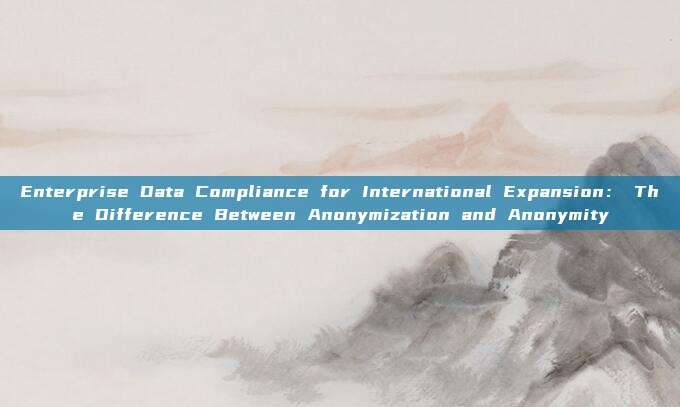What is anonymization?
Anonymization refers to the processing carried out according to the specific meaning in the Data Protection Law. This may differ from the way the term is used in other contexts, industries, or fields. Article 4(5) of the UK Data Protection Act defines pseudonymization as: '...processing personal data in such a way that personal data cannot be attributed to a specific data subject without the use of additional information, provided that such additional information is kept separately and is subject to technical and organizational measures to ensure that personal data cannot be attributed to a determined or identifiable natural person.'
On a fundamental level, anonymization starts from an input (raw data) and ends with two outputs (anonymized dataset and additional information), which refers to the technology of replacing, deleting, or transforming identifiable personal information. For example, replacing one or more identifiers (such as names) that are easily associated with individuals with pseudonyms (such as reference numbers).
Does anonymized data belong to personal data?

Yes.
Anonymization can reduce the privacy risks faced by individuals. It helps data controllers/processors fulfill their data protection obligations, including data protection design and security. However, when data controllers/processors process data in this way, they do not change the status of personal data.
The Data Protection Law clearly stipulates that if a person can be directly or indirectly identified or identifiable, then the information is considered personal data. The general processing system also explicitly states that data that has been anonymized still belongs to personal data. For example, Recital 26 of the UK General Data Protection Regulation points out: 'Personal data that has been anonymized, if it can be identified with a specific natural person through additional information, should be considered as information of the identifiable natural person.'
The difference between anonymization and anonymization
There may be confusion between anonymization and anonymization. For example, people often refer to data sets that still contain personal data, just in an anonymized form, as 'anonymized data'. Although anonymization can reduce the risk of personal data and take measures to make personal identity difficult to identify, it is still considered a form of personal data processing. Anonymized data can still be associated with specific individuals through additional information. However, anonymization is a more stringent processing process aimed at making personal data impossible to associate with any specific individual. The anonymization process makes personal data unidentifiable to the extent that it cannot be re-identified by any means. Anonymized data is no longer considered personal data because it can no longer be associated with any specific individual.
Data protection laws explicitly stipulate:
- Anonymous information is information that is unrelated to identified or identifiable individuals (the law does not apply to such information)
- Data that has been anonymized still belongs to personal data.
Understanding this distinction is very important. Through anonymization processing, the association between individuals and the related data is reduced, but it is not completely eliminated. Although individuals may not be able to identify themselves from the anonymized data itself, they can still be identified by referring to other separately stored information. Therefore, the dataset and additional information still belong to personal data.
The benefits of anonymization
Anonymization can help achieve the following objectives:
- Reduces the risks caused by processing personal rights. Anonymization can reduce the direct identification risk of personal data. By separating personal identifiers from data, anonymization can reduce the risk of data abuse or unauthorized use, thereby enhancing the privacy protection of the data subject.
- Enhances the security of processing personal data. Anonymization helps improve data security. By reducing direct association with personal identity, anonymization can lower the risk of data leakage. Even if anonymized data is accidentally obtained, it is difficult to re-identify it as a specific individual, thereby increasing data security.
- Facilitates data research and analysis. Anonymization allows data to maintain a certain degree of usability while reducing the infringement on personal privacy. This enables organizations to use anonymized data for analysis, research, and insights, obtaining valuable information without directly accessing and processing original personal identity information.
- Supports overall compliance with data protection principles. Anonymization helps meet data protection regulations and compliance requirements. Many data protection laws impose strict requirements on the processing and protection of personal data, and anonymization can be used as a compliance measure to reduce risks in the data processing process and ensure compliance with legal and regulatory provisions.
Anonymization can significantly enhance the practicality of data. However, data controllers should still consider whether anonymous information can achieve your goals. As a data controller, there is a responsibility to decide whether and how to implement anonymization techniques. Therefore, it is very important to clearly define the scope, parameters, and objectives, as well as potential risk scenarios.
评论已关闭